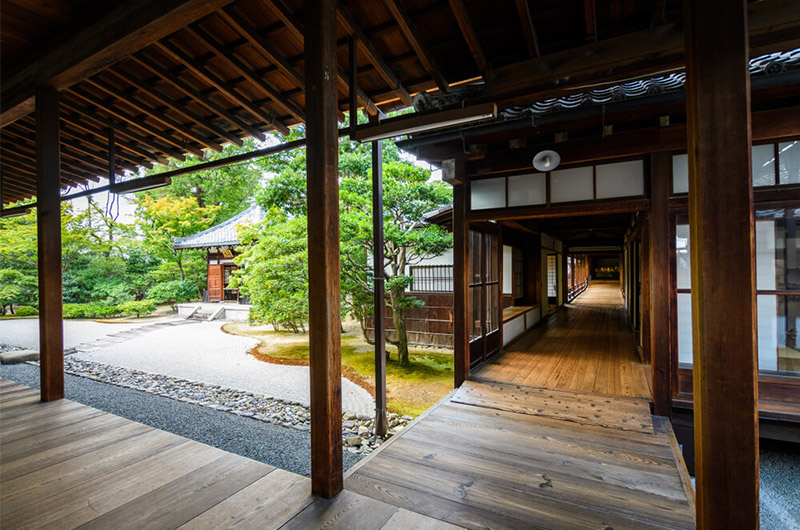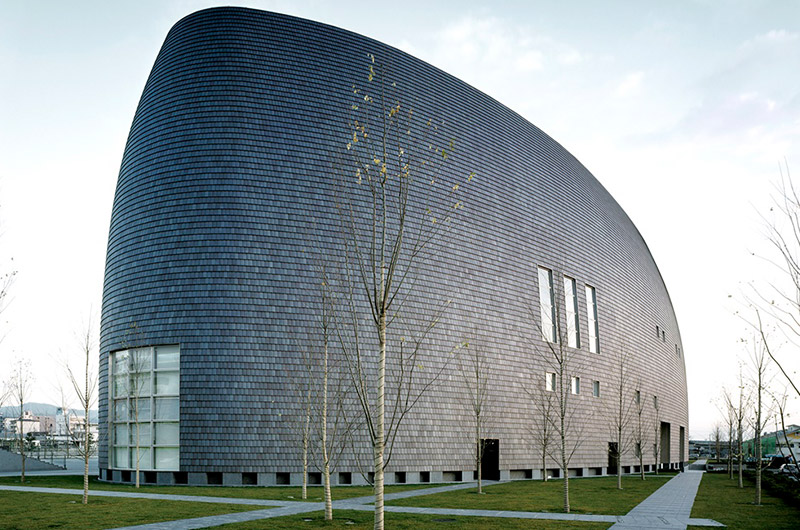8 WOMEN ARCHITECTS WHO CHANGED THE WORLD ARCHITECTURE HISTORY

It has been celebrated as the 1st of October Architecture Day every year since 1986 under the leadership of the International Union of Architects. According to the findings compiled by the design magazine Dezeen, only three of the world's 100 largest architecture firms are run by women. This year, we have compiled for you 8 women architects who changed the world architecture history, dedicated to women architects around the world. Who were they, what buildings did they design, and why were they so successful? Here are 8 top female architects who helped shape the industry.
1- Lady Elizabeth Wilbraham (1632 1705)
Often referred to as Britain's first female architect, Lady Elizabeth Wilbraham was a great home designer at a time when women were not allowed to practice art in general. Wilbraham was not allowed to be seen on the construction sites, and he would send men to the construction sites to present his designs. Although there are no written records, Wilbraham is believed to have designed around 400 buildings. This includes Belton House (Lincolnshire), Uppark House (Sussex), and Windsor Guildhall (Berkshire), some of the world's most famous designs. Wilbraham is also the architect of the Staffordshire family home and Weston Hall, a property with unusual architectural details located in Buckingham Palace.
2- Marion Mahony Griffin (February 14, 1871 - August 10, 1961)
Marion Mahony Griffin, the first employee of the prolific Frank Lloyd Wright, was one of the oldest licensed female architects in the world. He studied architecture at MIT and graduated in 1894. A year later, Mahony Griffin was hired by Wright as a painter, and Wright's influence on the development of Prairie-style architecture was immense. Together with Wright, Mahony Griffin designed leaded glass, furniture, lanterns, murals, and mosaics for many of the homes. He was known for his intelligence and his distinctive laughter. He refused to submit to Wright's ego and drew his own way. Among his works are David Amberg Residence (Michigan) and Adolph Mueller House (Illinois), one of the most famous buildings in the world.
3- Elisabeth Scott (September 20, 1898 - June 19, 1972)
In 1927, Elisabeth Scott became the first female architect in England to win an international architectural competition for her design for the Shakespeare Memorial Theater in Stratford-upon-Avon. She was the only woman among the more than 70 applicants. The theater he designed, by a female architect others, was the foremost public building in England. She was recognized in the press with headlines such as "The Girl Architect Beats the Guys" and "The Unknown Girl's Leap to Fame". Scott began his career in 1919 as a student of the Architecture Association's new school in London. He graduated in 1924. Scott, who performs stereotypical male roles, has decided to see it too new to see it necessary to assist with the completion of the Stratford-upon-Avon project, as well as with the Fawcett Society to encourage wider acceptance. He also worked with female clients. For example, he worked at the Marie Curie Hospital in Hampstead in 1929 and then expanded his hospital to treat 700 each year.
Although famous for the Shakespeare Memorial Theater, Scott later returned to his hometown of Bournemouth and designed the iconic Pier Theater. The Art32 building opened in 1932 and more than 100,000 people began to see Prince Edward VIII of Wales. Scott was a member of the architects department of Bournemouth City Council and worked until the age of 70.
4- Dame Jane Drew (24 Mart 1911 - 27 Temmuz 1996)
Moving on from British female architects, it is undeniable that Dame Jane Drew is one of the most famous. Drew's interest in this field started early. He used to build things as a little boy using wood and bricks, and later studied architecture at the Architecture Association. During her time as a student, Drew, in addition to being the first woman to be elected to the council, was included in the building of the Royal Institute of British Architecture.
Drew was one of the main founders of the Modern Movement in Britain, who made a conscious decision to use his maiden name throughout his wealthy career. During the Second World War, he first began an all-female architectural practice in London. Drew has signed on to several projects during this time, including the completion of 11,000 air raid shelters for children in Hackney.
1942'de Drew, ünlü mimar Maxwell Fry ile evlendi ve eşiyle 1987'den ölümüne kadar devam edecek olan bir ortaklık kurdu. Savaştan sonra dünya genelinde yoğun bir şekilde binalar inşa ettiler. Bunlara, Nijerya, Gana ve Fildişi Sahili gibi ülkelerde hastaneler, üniversiteler, konutlar ve devlet dairelerinin kurulması da dahil. Drew'ün Afrika'daki çalışmalarından etkilenen Hindistan başbakanı, Drew'dan yeni Pencap başkenti Chandigarh'ı tasarlaması istendi. Mimarlığa yaptığı katkılardan dolayı Drew, Harvard ve MIT gibi üniversitelerden birçok onursal derece ve doktora derecesi aldı.
5- Lina Bo Bardi (5 December 1914 - 20 March 1992)
Lina Bo Bardi designed bold buildings combining Modernism with Populism. The Italian architect graduated from Architecture Rome College in 1939 and established his own office in 1942. He was invited to become director by Milano's design magazine Domus. Bo Bardi later moved to Brazil in 1946 and became naturalized five years later.
In 1947, Bo Bardi was invited to design the São Paulo Museum of Art. Hanging on a 70-meter-long square, this iconic structure has become one of Latin America's most important museums. Other projects include The Glass House, which she designed for herself and her husband, and SESC Pompéia, a cultural and sports center.
Bo Bardi founded the famous Habitat Magazine with her husband in 1950 and worked as its editor until 1953. At that time, the magazine was the most influential architectural publication in post-war Brazil. Bo Bardi also founded the country's first industrial design course at the Institute of Contemporary Art. He died in 1992 before he could finish many projects.
6- Norma Merrick Sklarek (April 15, 1926 - February 6, 2012)
Norma Merrick Sklarek's architectural life was full of firsts. Sklarek was the first black woman to be licensed as an architect in both New York and California, and also the first black woman to be a member of the American Institute of Architects. Throughout his life he faced great discrimination that made his achievements even more impressive.
Sklarek attended Barnard College for a year and gained a liberal arts specialization that would allow him to study Architecture at Columbia University. Sklarek found architectural education challenging as most of his classmates had either a Bachelor's or Master's degree. She was one of two women who graduated in 1950 and was the only African American in her group. In search of a job, he was rejected by 19 companies. He said, “They weren't hiring women or African Americans and I didn't know which one was working against me.” Finally, in 1955, Skidmore did an architectural job with Owings & Merrill.
With a strong personality and intellectual vision, Sklarek stood out in his career and eventually became director of the architectural firm Gruen Associates. She later founded Sklarek Siegel Diamond, America's largest and only female architecture firm. He signed his signature on the US Embassy in Tokyo and LAX Terminal, one of the most important architectural structures in the world.
7- MJ Uzun (31 July 1939 - 3 September 2018)
Mary Jane 'MJ' Long would oversee the operational aspects of the design for the British Library, often with her husband Colin St John Wilson. Born in New Jersey, USA, Long completed his architectural degree at Yale before working with St John Wilson in 1965. They got married in 1972.
The British Library took 15 years to complete. Long is also known for his practice called MJ Long Architect, which he designed from 1974 to 1996. During this time, he designed various purpose art studios for people such as Peter Blake, Frank Auerbach, Paul Huxley and RB Kitaj. In 1994, he collaborated with his friend Rolfe Kentish to form another company called Long & Kentish. The firm's first work was a £ 3 million library project for Brighton University. Long & Kentish went on to design buildings such as the National Maritime Museum in Falmouth and the Jewish Museum in Camden.
8- Dame Zaha Hadid (October 31, 1950 - March 31, 2016)
Dame Zaha Hadid is undeniably one of the most successful female architects in history. The Iraqi-born British architect is the first woman to win the Pritzker Prize in 2004, which is awarded to architects who demonstrate commitment and prestige, talent and vision in their work. Hadid left behind a net worth of £ 67 million with his untimely death, and a year later won the RIBA Gold Medal - Britain's largest architectural award.
Hadid's striking buildings have garnered critical acclaim across Europe for their organic, flowing forms, from entertainment centers to towers. He studied art at the American University of Beirut before pursuing his career at the Architectural Association in London. It established its own applications in 1979.
Among the buildings that branded Zaha Hadid Architects were the Riverside Museum in Glasgow, the 2012 Olympics London Aquatics Center, the Guangzhou Opera House and the Generali Tower in Milan. Often referred to as the "star architect," Time Magazine named Hadid among the 100 most influential people on the planet in 2010. Hadid's trend-setting architectural legacy survives even after three years after his death.










